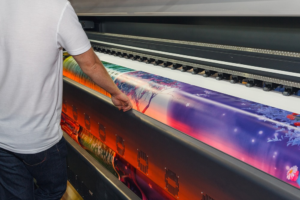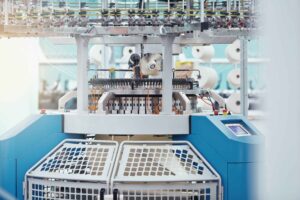The textile industry has been progressing in leaps and bounds over the years. In recent times, the industry celebrated many new innovations and progress that have been pioneering a big change and adding a lot of character to the industry. With the advancement of technology and its applications all across the industry, smart textiles have risen to immense prominence lately and their application areas like medical care, protective clothing, shape memory textiles, sports textiles etc. have been brought under the spotlight. So, let’s look at this concept more closely.
What are smart textiles?
The concept of Smart textiles was proposed from University of Virginia United states to Japanese scholar in the year 1989. He integrated information science into the material and developed smart materials. The term smart textiles means intelligent materials. This means that the textiles are able to sense stimuli from the environment, react to them, and adapt to them by integrating functionalities in the textile structure. The stimulus, as well as the response, can have electrical, thermal, chemical, magnetic, or other origins. The first applications of smart textiles can be found in clothing.
Smart clothing, thus, is defined as a new garment feature that can provide interactive reactions by sensing signals, processing information, and actuating the responses. They are capable of showing a significant change in their mechanical properties such as shape, colour, and stiffness, or their thermal or electromagnetic properties. Typical examples of smart textiles are fabric and dyes that will change their colour where the clothes are made out of conductive polymers which give light when they get electromagnetic signals. They also regulate fabrics the surface temperature of the garments in order to achieve physiological comfort. The first smart textile material, was silk thread which has a shape memory.
Keeping these thoughts in mind, let’s understand the concept of smart textiles through the varied types of smart fibres, listed below:
Shape memory fibre
Shape memory fibres are referred to as fibre that possesses a shape memory effect. It means that when a deformed fibre is given some external stimulus by means of pressure and temperature, the deformed fibre would return to its original shape.
Photochromic fibre
These are photosensitive colour changing substances that have organic compounds containing isomers. Such photochromic fibres undergo reversible configuration under the action of light.
Optical fibre
A kind of composite fibre that can enclose light energy and transmit it in a wavelength mode. It is also called smart fibre and provides excellent transmission performance. Optical fibre consists of two parts, a code, and a cladding.
Temperature sensitive fibre
Temperature-sensitive fibres are the fibres whose properties will change reversibly with temperature.
Conductive fibres
Conductive fibers possess excellent specific resistance and electrical conductivity, absorb electromagnetic waves, detect and transmit electrical signals. Conductive fibers can be roughly divided into electron conductive fibers, ion conductive fibres, and inductive fibres.
Health smart fibre
These are developed for the enhancement of people’s awareness against anti-bacterial, safety, and impact-resistant fibre. Among them selective anti-bacterial fibre (smart fibre) will inhibit or kill the surface bacteria by the addition of an antibacterial agent.
Depending on the qualities and type of smart fabric or fiber, they find immense usage and applications all across the industry. From extensive medical application to well-spread application in military to finding regular application in fire fighter uniforms to widespread application in infrastructure development and much more, the smart textile is much demand today all across the world.
Market Overview and major players
The global smart textiles market is expected to grow from USD 2.3 billion in 2021 to USD 6.6 billion by 2026, growing at a healthy CAGR of 23.2 % during the forecast period. In terms of products, wristwear accounted for the largest market revenue of 29.4% of the global wearable technology market in 2021. Smart textiles are no more limited to the developed countries and its recognition and prominence is rising all across the globe. It is a phenomenon that every country and region is exploring through new innovation and multiple new technology development.
Some of the major players dominating this industry are E. I. Du Pont De Nemours and Company, Intelligent Clothing Ltd., Interactive Wear AG, International Fashion Machines Inc., Kimberly-Clark Health Care, Milliken & Company, Noble Biomaterials Inc., Outlast Technologies Inc., QinetiQ North America, Royal Philips.
Smart fibers /smart textiles and their applications are research hotspots in today’s textile field, as well as future development trends. Smart textile materials are the backbone of high-tech functional textiles. The application of smart fibers and smart textiles is becoming more open and consumer acceptance is increasing. At present, the main application fields of smart fibers and smart textiles are medical health care, military protection, firefighting, entertainment and sports, and clothing consumption. Moreover, it appears that this is only possible by intense cooperation between people from various backgrounds and disciplines such as microelectronics, computer science, material science, polymer science, biotechnology, etc. More research work is also emphasized in certain areas like high-performance fibres and their utility.






